I do have a function, for example ![f(x)=k\sqrt[a]{x}](../../images/3900249418.webp) , but this can be something else as well, like a quadratic or logarithmic function. I am only interested in the domain of
, but this can be something else as well, like a quadratic or logarithmic function. I am only interested in the domain of ![x \in [1,50000]](../../images/3830911944.webp) . The parameters of the function (a and k in this case) are known as well.
. The parameters of the function (a and k in this case) are known as well.
My goal is to fit a continuous piece-wise function to this, which contains alternating segments of linear functions (i.e. sloped straight segments, each with intercept of 0) and constants (i.e. horizontal segments joining the sloped segments together). The first and last segments are both sloped. And the number of segments should be pre-selected between around 9-29 (that is 5-15 linear steps + 4-14 constant plateaus).
Formally
- The input function:

- The fitted piecewise function:

I am looking for the optimal resulting parameters (c,r,b) (in terms of least squares) if the segment numbers (n) are specified beforehand. The resulting constants (c) and the breakpoints (r) should be whole natural numbers, and the slopes (b) round two decimal point values.
I have tried to do the fitting numerically using the pwlf package using a segmented constant models, and further processed the resulting constant model with some graphical intuition to "slice" the constant steps with the slopes. It works to some extent, but I am sure this is suboptimal from both fitting perspective and computational efficiency. It takes multiple minutes to generate a fitting with 8 slopes on the range of 1-50000. I am sure there must be a better way to do this.
My idea would be to instead using only numerical methods/ML, the fact that we have the algebraic form of the input function could be exploited in some way to at least to use algebraic transforms (integrals) to get to a simpler optimization problem.
import numpy as np
import matplotlib.pyplot as plt
import pwlf
# The input function
def input_func(x,k,a):
return np.power(x,1/a)*k
x = np.arange(1,5e4)
y = input_func(x, 1.8, 1.3)
plt.plot(x,y);
def pw_fit(func, x_r, no_seg, *fparams):
# working on the specified range
x = np.arange(1,x_r)
y_input = func(x, *fparams)
my_pwlf = pwlf.PiecewiseLinFit(x, y_input, degree=0)
res = my_pwlf.fit(no_seg)
yHat = my_pwlf.predict(x)
# Function values at the breakpoints
y_isec = func(res, *fparams)
# Slope values at the breakpoints
slopes = np.round(y_isec / res, decimals=2)
slopes = slopes[1:]
# For the first slope value, I use the intersection of the first constant plateau and the input function
slopes = np.insert(slopes,0,np.round(y_input[np.argwhere(np.diff(np.sign(y_input - yHat))).flatten()[0]] / np.argwhere(np.diff(np.sign(y_input - yHat))).flatten()[0], decimals=2))
plateaus = np.unique(np.round(yHat))
# If due to rounding slope values (to two decimals), there is no change in a subsequent step, I just remove those segments
to_del = np.argwhere(np.diff(slopes) == 0).flatten()
slopes = np.delete(slopes,to_del + 1)
plateaus = np.delete(plateaus,to_del)
breakpoints = [np.ceil(plateaus[0]/slopes[0])]
for idx, j in enumerate(slopes[1:-1]):
breakpoints.append(np.floor(plateaus[idx]/j))
breakpoints.append(np.ceil(plateaus[idx+1]/j))
breakpoints.append(np.floor(plateaus[-1]/slopes[-1]))
return slopes, plateaus, breakpoints
slo, plat, breaks = pw_fit(input_func, 50000, 8, 1.8, 1.3)
# The piecewise function itself
def pw_calc(x, slopes, plateaus, breaks):
x = x.astype('float')
cond_list = [x < breaks[0]]
for idx, j in enumerate(breaks[:-1]):
cond_list.append((j <= x) & (x < breaks[idx+1]))
cond_list.append(breaks[-1] <= x)
func_list = [lambda x: x * slopes[0]]
for idx, j in enumerate(slopes[1:]):
func_list.append(plateaus[idx])
func_list.append(lambda x, j=j: x * j)
return np.piecewise(x, cond_list, func_list)
y_output = pw_calc(x, slo, plat, breaks)
plt.plot(x,y,y_output);


